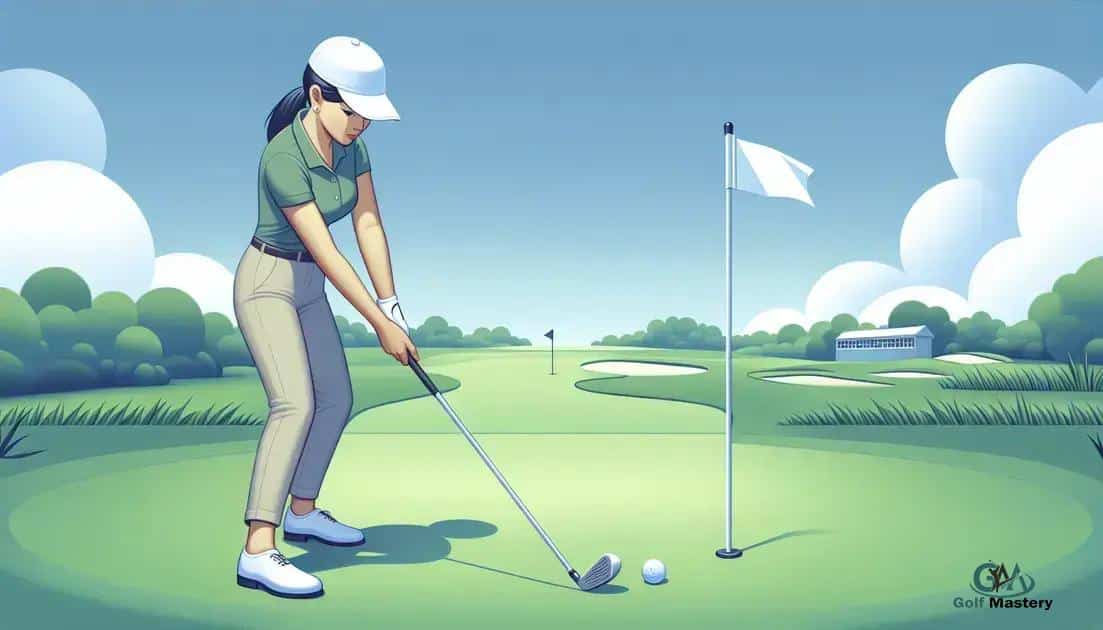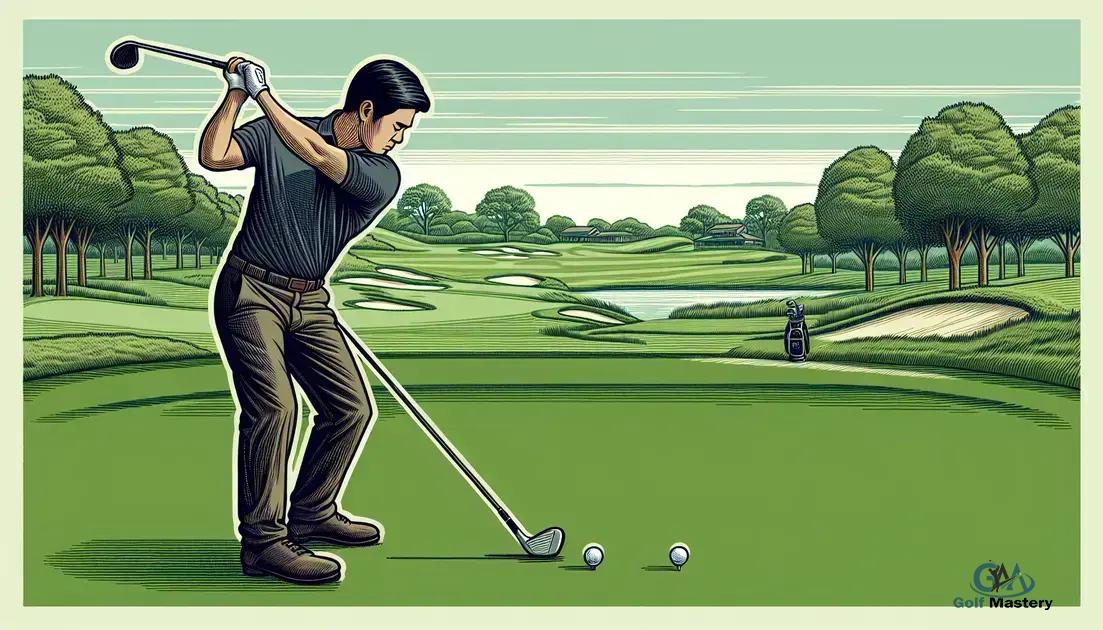What is a cut in golf? Understanding this term is essential for all golf enthusiasts and players looking to improve their game.
A cut in golf is a controlled shot that curves to the right for right-handed players, essential for strategic play in tournaments. Mastering the cut enhances accuracy and consistency, helping golfers effectively navigate course challenges.
What is a cut in golf? It’s a term that every golf player should be familiar with as it plays a crucial role in the game. A cut refers to a specific type of shot or the performance cut, particularly during tournament play. In this article, we’ll break down the concept of a cut in golf, its various forms, and how understanding it can enhance your play on the course.
Definition of a Cut in Golf
In golf, a cut generally refers to a specific type of shot that curves to the right, for right-handed players. This shot is often used intentionally to navigate around obstacles or to enhance shot accuracy. Understanding the definition of a cut in golf is essential because it influences how players approach their swing and course strategy.
Understanding the Mechanics of a Cut
A cut shot is achieved by positioning the clubface slightly open at impact. The stance may also be set slightly left of the target line for right-handed players. This combination of factors results in a left-to-right movement of the ball through the air.
Why Do Golfers Use a Cut?
Players utilize cuts for several reasons: to avoid hazards, to control their ball’s trajectory, or to set themselves up for an easier next shot. Mastering a cut enables golfers to adapt to various course conditions, offering strategic advantages during play.
Difference Between a Cut and a Slice
It is important to differentiate a cut from a slice. While both shots curve to the right, a slice usually results from an imperfect swing and often leads to more severe deviations. A cut, on the other hand, is a controlled and intentional movement designed to achieve specific course management goals.
Knowing the definition of a cut in golf helps players recognize when to implement this shot and how it can benefit their game overall.
Types of Cuts in Golf
In golf, there are several types of cuts that players can effectively use based on their needs and course conditions. Understanding these types enhances a player’s ability to navigate different challenges on the course.
1. Fade
A fade is a controlled cut shot that gently curves to the right. Players often use a fade to gain distance and precision on approach shots. This type of cut is effective for navigating around trees or hazards while setting up for a lower trajectory.
2. Power Fade
The power fade is a stronger version of the standard fade, producing a more pronounced curve. It is usually employed by more advanced players who want to retain distance while incorporating a reliable shot shape. This shot can also be helpful in recovering from a wayward drive.
3. Cut Approach
A cut approach shot is used when the golfer needs to land the ball softly on the green. By opting for this shot, players can achieve better control and allow for a smoother roll once the ball lands, making it suitable for delicate situations.
4. Knockdown Cut
The knockdown cut is used in windy conditions. This shot is hit with a lower trajectory, which reduces the impact of the wind on the ball’s flight. It helps the golfer maintain distance while achieving accuracy, especially during adverse weather.
5. Slice
While not intended, a slice occurs when a ball curves sharply to the right due to an open clubface at contact. Slices are often the result of flawed swings. However, recognizing a slice can help players make adjustments to avoid inconsistent shots.
By exploring these types of cuts in golf, players can learn to apply them strategically to improve their performance on the course.
Importance of the Cut in Tournaments
The importance of the cut in tournaments cannot be overstated. In professional golf, the cut determines which players advance to the final rounds of a tournament. After the first two rounds, the field is narrowed based on their scores, allowing only the best-performing players to continue.
Strategic Advantage
Understanding how to play with a cut can give golfers a strategy advantage. Players need to manage their scores over four rounds carefully. Often, those who can play consistently with a cut shot have an edge, especially during crucial moments.
Pressure Management
During tournaments, golfers face additional pressure to perform under scrutiny. Knowing when to utilize a cut shot aids in dealing with this pressure. The ability to confidently execute a cut can lead to better performance throughout the competition.
Handling Course Conditions
A cut shot plays a vital role in adapting to various course conditions. Players frequently encounter challenges like tight fairways or strong winds. By mastering cut shots, players can adjust their gameplay effectively, potentially leading to lower scores.
Performance Prediction
Understanding the cut’s importance allows players and coaches to analyze past performance better. By looking at how well a golfer executes cut shots during rounds, they can predict future successes in tournaments.
In summary, the significance of the cut in tournaments creates a foundation for players to optimize their skills, approach, and mental strategy while competing for success.
How to Play with a Cut
Knowing how to play with a cut is essential for golfers who want to elevate their game. A cut shot can give players more control and accuracy on the course.
1. Grip and Setup
Start with your grip. To execute a cut shot, hold the club slightly firmer in your hands. Position your body slightly open to the target line. When you set up, align your feet and shoulders to the left of the target while keeping the clubface square or just slightly open.
2. Swing Path
The swing path is crucial for a successful cut. As you take your backswing, keep the clubhead on the inside of the target line. During your downswing, aim to swing along the path of your body, which will promote the left-to-right spin on the ball.
3. Impact Position
At impact, make sure the clubface is slightly open compared to your swing path. This alignment helps direct the ball to curve gently to the right for right-handed players. Ensure you maintain a steady head position and balanced body weight throughout the swing.
4. Follow-Through
A proper follow-through is important to complete your cut shot. Your weight should shift to your front foot, and your arms should extend towards your target. A full follow-through helps achieve better consistency and can enhance ball control.
5. Practice Drills
Practice is key to mastering the cut. Set up drills focusing on each part of the swing. For example, practice swings using alignment sticks can help reinforce proper body alignment. Additionally, using targets on the range can improve your accuracy.
By learning how to play with a cut effectively, golfers can gain confidence in their ability to navigate tricky course scenarios and improve overall performance.
Common Mistakes to Avoid When Putting a Cut
Avoiding common mistakes is key to successfully executing a cut shot. Here are some common mistakes to avoid when putting a cut.
1. Improper Grip
One common mistake is holding the club too tightly. A tight grip restricts the natural motion of the swing and can lead to tension in your arms. Loosen your grip slightly to allow for a smooth and controlled cut.
2. Incorrect Alignment
Players often ignore proper alignment. Standing too far left or right can significantly affect the shot. Always ensure your body is aligned toward your intended target while positioning the clubface correctly.
3. Neglecting the Swing Path
A poor swing path is a significant mistake that can lead to unsatisfactory results. Focus on keeping the club on an inside path during the backswing and following through along the desired line during the downswing.
4. Overthinking the Shot
Overthinking can lead to hesitation and tension. Trust your practice and instincts. This includes visualizing the shot before you take it and staying relaxed throughout the process.
5. Inconsistent Follow-Through
Failing to complete a proper follow-through can hinder the shot’s effectiveness. Make sure that you finish your swing with your weight shifted onto your front foot and your arms extended toward the target.
Awareness of these common mistakes to avoid when putting a cut can help golfers enhance their performance and consistency on the course.
In Summary: Mastering the Cut in Golf
Understanding what a cut in golf is, its various types, and how to effectively execute it can greatly enhance your overall gameplay. Knowing the importance of the cut in tournaments prepares players to leverage strategic advantages during competitions.
By practicing key techniques on how to play with a cut and avoiding common mistakes, golfers can increase consistency and confidence on the course. Whether it’s for a casual game or a competitive tournament, mastering the art of the cut can be a game changer.
Continued practice and awareness will not only improve shot accuracy but also aid in adapting to various course conditions. Overall, embracing the cut as an essential part of your golfing skill set is beneficial for all players.
FAQ – Frequently Asked Questions about Cuts in Golf
What is a cut in golf?
A cut in golf refers to a specific type of shot that curves to the right for right-handed players. It can also refer to performance cuts in tournaments.
Why is understanding the cut important for golfers?
Understanding the cut is crucial as it can enhance shot control and strategic gameplay, especially during tournaments.
What are the different types of cuts in golf?
Common types of cuts include fade, power fade, cut approach, knockdown cut, and slice.
How can I effectively play with a cut?
To play with a cut, focus on your grip, alignment, swing path, impact position, and follow-through while practicing regularly.
What mistakes should I avoid when executing a cut?
Common mistakes include improper grip, incorrect alignment, neglecting swing path, overthinking the shot, and inconsistent follow-through.
How does mastering the cut improve my golf game?
Mastering the cut can lead to better accuracy and consistency, enabling you to navigate course challenges more effectively.






Leave a Reply